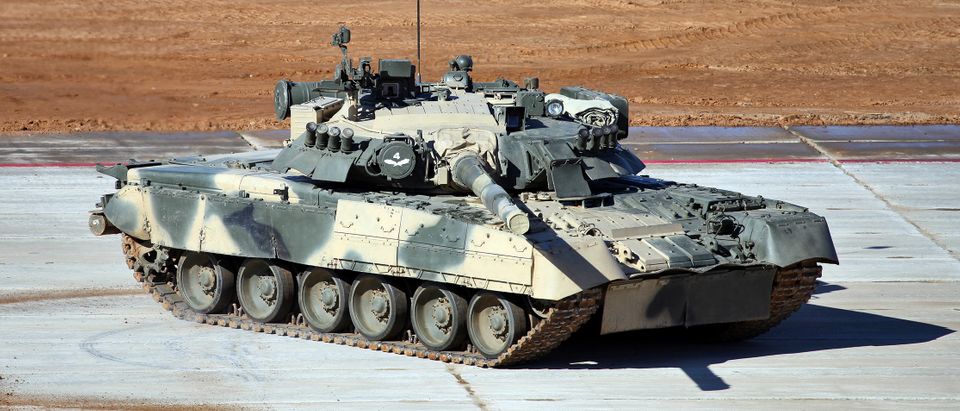Russia is reforming the 1st Guards Tank Army – a formation once intended to smash through NATO’s lines in a Third World War – after having disbanded the unit in 1998. When it deactivated, it had two tank divisions (11th Guards Tank Division and 9th Tank Division) and a motorized rifle division (the 20th Guards Motorized Rifle Division, carrying mechanized infantry). The formation primarily had T-80 main battle tanks and BMP infantry fighting vehicles in the Cold War.
Today, the units comprising the 1st Guards Tank Army (the 4th Guards Tank Division and the 2nd Guards Motorized Rifle Division, plus two “brigades” – formations similar to a regiment) still use the T-80 and the BMP, but the BTR-80 armored personnel carrier also is available for this unit. So, this new iteration is not as powerful as the one that stared across the Inter-German Border at NATO.
First off, note the smaller size. In essence, the “new” 1st Guards Tank Army is short roughly two tank regiments that were in service with the “old” 1st Guards Tank Army. This is not a minor matter – a total of six tank battalions (usually about 31 tanks each) and two motor-rifle regiments (about 30-35 BMPs each) – the lack of a tank division also deprives the “new” 1st Guards Tank Army of an independent tank battalion that usually carries 51 tanks. That’s almost 240 tanks.
The tanks in question will likely be the T-80 – which has a 125mm smoothbore gun with 36 rounds (including anti-tank missiles fired from the tank’s 125mm gun), a 12.7mm DShK machine gun, and a 7.62mm machine gun. This tank entered service in 1976, and has seen action in Chechnya. Russia has about 5,000 of these tanks, either in active service or in reserve.
The T-80 usually teamed up with the BMP infantry fighting vehicle. This comes in three versions, two of which have been in the “new” 1st Guards Tank Army’s inventory. The BMP-1 was the original infantry fighting vehicle, carrying a crew of three and eight infantrymen. What made it a game-changer was that it was armed with a 73mm gun, and the AT-3 “Sagger” anti-tank missile, which proved itself in the 1973 Yom Kipper War. The BMP-1 would later be supplemented by the BMP-2 in Soviet (and later Russian) service. Like the BMP-1, it has a crew of three but carries only seven infantrymen. The real change was that it replaced the 73mm gun with a 30mm autocannon, and upgraded the anti-tank missile to the AT-5 Spandrel.
The “new” 1st Guards Tank Army adds the BTR-80 armored personnel carrier. This is an eight-wheeled vehicle that has a crew of three and carries another seven infantrymen. The major difference is that the BTR-80 only has a 14.5mm machine gun, the venerable KPV. The BTR is an eight-wheeled vehicle, much like the Stryker. Over 200 of these vehicles are in the 2nd Guards Motorized Rifle Division, according to the 2000 report required by the Conventional Forces in Europe Treaty.
All in all, it’s a step down from what the Soviets had. But keep this in mind: The United States has drawn down its forces in Europe, and the only ground forces in that continent are the 173rd Airborne Brigade in Sicily and a Stryker Brigade Combat Team. That’s not much when facing off against Russia’s heavy metal.


